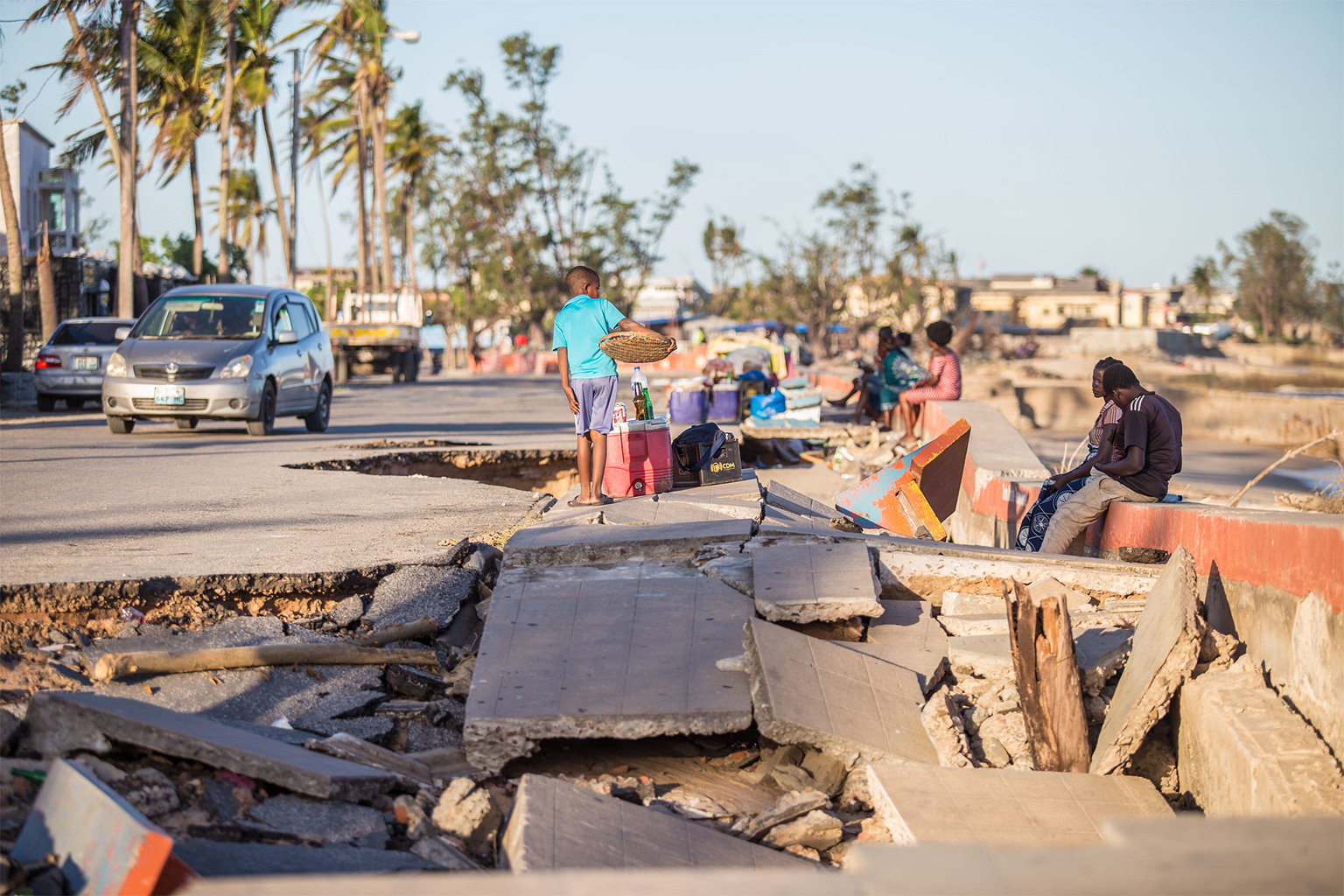
- Batsirai, a category 4 cyclone, struck Madagascar’s eastern coast on Feb. 5, leaving 10 people dead.
- The island nation is still recovering from another tropical storm, Ana, which made landfall on Jan. 22 and left dozens dead and hundreds of thousands homeless.
- Data from the U.S. National Oceanic and Atmospheric Administration show that 12 storms of category 4 or 5, the highest level, made landfall on Madagascar between 1911; of these 12, eight occurred since 2000.
Cyclone Batsirai rammed into Madagascar’s coast on Feb. 5, bringing further devastation to a country already reeling from the effects of another tropical storm, Ana, that struck on Jan. 22.
Batsirai, a category 4 cyclone with wind speeds of 235 kilometers per hour (146 miles per hour), struck the island’s eastern coast near the city of Mananjary. A resident in an interview with news channel Europe 1 compared the destruction in his city to being bombed. At least 10 people have died.

In January, tropical storm Ana barreled across Madagascar, leading to 48 deaths, most of them in the central region, where the capital Antananarivo is located. At least 130,000 people lost their homes to storm winds, landslides and flooding.
Ana went on to strike the African mainland, leaving 20 dead in Mozambique and 20 in Malawi. Batsirai, which swept through Madagascar and entered the Mozambique Channel on Feb. 7, is unlikely to reach continental Africa.
Madagascar, a gourd-shaped island off Africa’s eastern coast, lies in the southwestern Indian Ocean. For the world’s fourth-largest island, cyclones are a recurring natural disaster, with the highest risk from December to January. On average, one cyclone makes landfall every year, but category four cyclones, some of the most powerful and destructive, are rarer.

Data from the U.S. National Oceanic and Atmospheric Administration’s historical hurricane tracker show that 12 storms of category 4 or 5, the highest level, made landfall on Madagascar since 1911. Of these 12, eight occurred since 2000.
Prior to Batsirai, the last such storm was Cyclone Enawo in March 2017, a category 4 storm that caused 80 deaths and $50 million in damages.
Nearly 600,000 people in Madagascar are at risk from Batsirai, according to the U.N.’s World Food Programme (WFP).
Many of these storms follow a similar destructive path. They hit Madagascar, weakening as they traverse the island from east to west, then gain strength while crossing the Mozambique Channel before striking the East African nation.
In January 2021, Cyclone Eloise struck Madagascar before pummeling the Mozambican coast. It made landfall on Jan. 23, bringing heavy rains and flooding to Mozambique’s Sofala province and the southern part of Zambezia, as well as Inhambane and Gaza and Manica provinces. More than 300,000 people were affected by the storm in Mozambique.

Mozambique is one of the most vulnerable countries to climate change, especially with heightened storm activity as oceans warm and sea levels rise. The country faced a disastrous 2019 when cyclones Idai and Kenneth crashed into its coast in the space of six weeks, impacting more than 2 million people. That year marked the first time in recorded history that two powerful tropical cyclones hit Mozambique in the same cyclone season.
“The people of Southern Africa have been on the front lines of climate extremes for many years now, and each passing storm sets them back, resetting the progress made,” Margaret Malu, WFP’s deputy regional director, said in a statement.
Storms often destroy electricity infrastructure, wreck roads and bridges, and destroy homes, schools and health centers. Harvest losses from flooding of croplands worsen food shortages and insecurity. These disruptions persist long after the storms pass.
Banner image: Cyclone Batsirai approaching Madagascar on Feb. 4. Image by NASA.
Two storms in two weeks carve trail of death and destruction in Madagascar
Source: Trends News

0 Comments